A “significantly upgraded” SpaceX Falcon 9 rocket stands erect on the Florida space coast today, Sunday, Dec. 20, and is poised to make history Monday evening (Dec. 21) with a spectacular nighttime blast off and daring first ever surface landing attempt of the boosters first stage at Cape Canaveral Air Force Station, that could be accompanied by sonic booms – if all goes well.
Dec 20 Update: SpaceX CEO Elon Musk has just scrubbed for the day and reset launch to Monday, Dec. 21 and story is revised.
“Just reviewed mission params w SpaceX team. Monte Carlo runs show tmrw night has a 10% higher chance of a good landing. Punting 24 hrs,” Musk tweeted.
Monday’s night launch of the 229 foot tall Falcon 9 rocket with a fleet of eleven commercial communications satellites for Orbcomm from Space Launch Complex-40 (SLC-40) on Cape Canaveral Air Force Station, Fla. is set for 8:33 p.m. EST. Watch live here
This Falcon 9 launch marks the boosters ‘Return to Flight’ and is the first for SpaceX since the catastrophic mid-air destruction of the rocket six months ago on June 28, 2015 on a cargo mission for NASA bound for the International Space Station (ISS).
Liftoff of the two stage Falcon 9 is slated for the opening of the 60-second launch window at 8:33 p.m. EST under currently cloudy to sunny Florida skies.
The bold and history making landing attempt of the boosters first stage back at the Cape at Landing Zone would come after high altitude separation from the upper stage and around 10 to 20 minutes after launch, and has garnered much attention. The goal is to recover and eventually reuse the boosters in order to significantly cut the cost of access to space, as often stated by SpaceX CEO Elon Musk.
You can watch the dramatic events unfold via a live SpaceX webcast available at SpaceX.com/webcast.
The SpaceX webcast is planned to start about 25 minutes before liftoff, beginning at approximately 8:05 p.m. ET on Dec. 21.
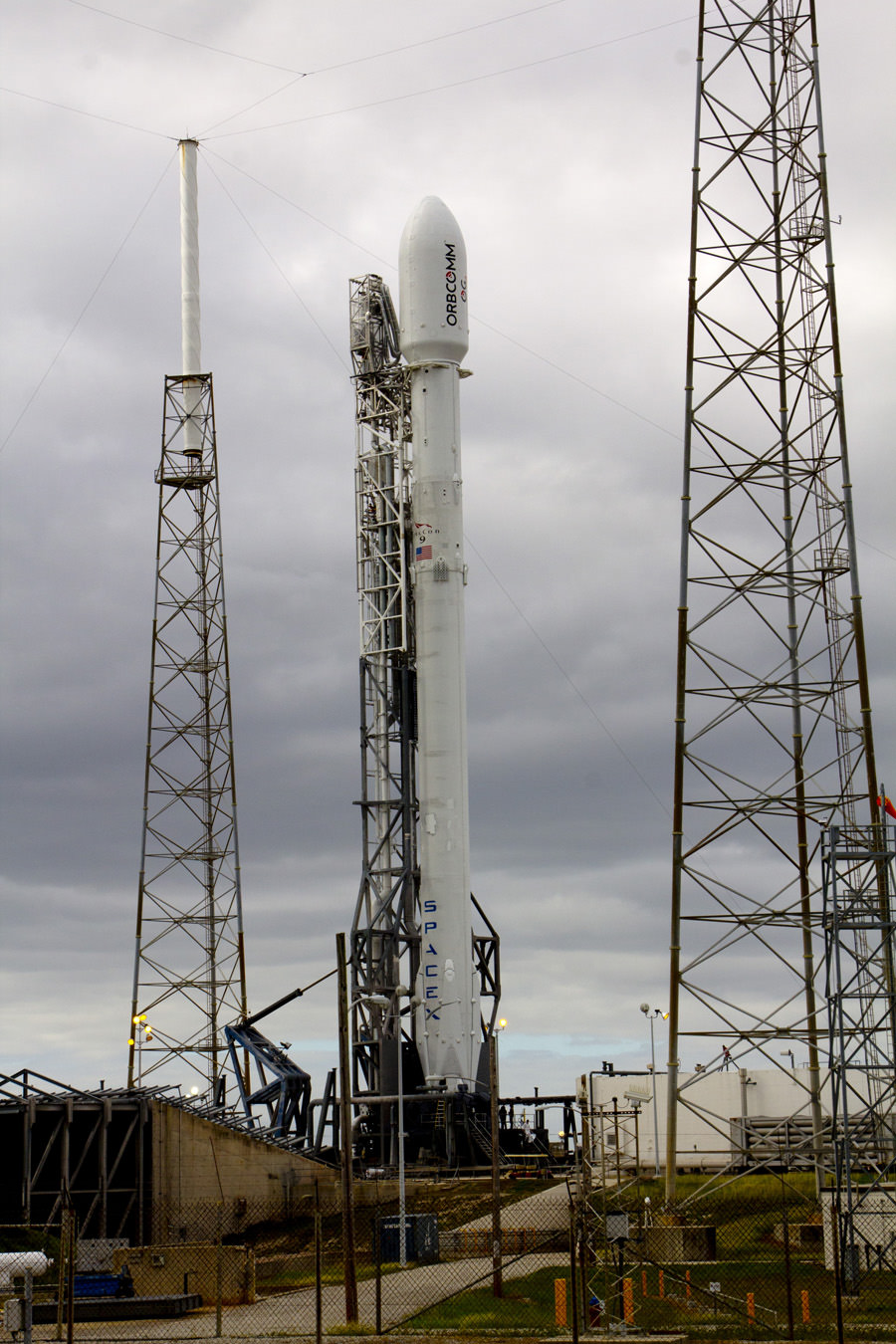
“Currently looking good for a Sunday night attempted orbital launch and rocket landing at Cape Canaveral,” SpaceX CEO and founder Elon Musk tweeted on Saturday, Dec 19.
The backup launch opportunity was available on Dec. 21 if needed – until todays scrub.
Air Force meteorologists are currently predicting an 80 percent chance of favorable weather conditions at launch time on Monday, compared to a 90 percent chance on Sunday.
“The primary concerns Monday are with the cumulus cloud rule associated with isolated coastal rain showers and the thick cloud rule due to the frontal boundary’s possible northern movement back into the area,” said the Air Force.
The Falcon 9 rocket is flying in a newly upgraded configuration and is poised for blastoff.
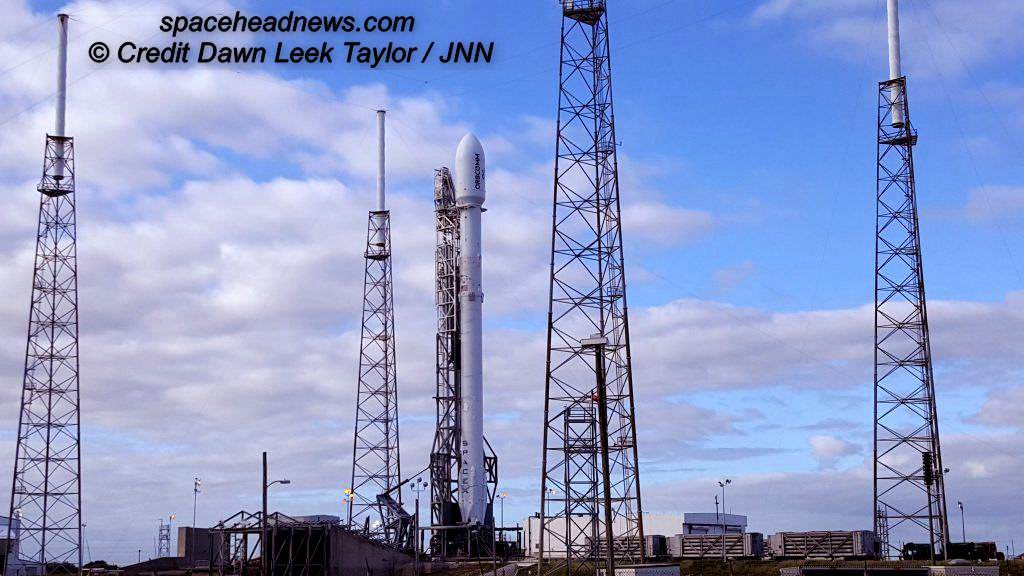
Technicians will start fueling operations with liquid oxygen and RP-1 propellants in the afternoon.
The primary mission is to carry a payload of eleven small commercial communications satellites for Orbcomm on the second OG2 mission. They are fueled and stacked on the satellite dispenser and encapsulated inside the payload fairing.
The secondary test objective of SpaceX is to land the Falcon 9 rockets first stage on land by a pinpoint propulsive soft landing for the first time in history at SpaceX’s Landing Zone 1 complex, located several miles south of launch pad 40 at Cape Canaveral.
Because of the proximity to populated areas, SpaceX required special approvals for the surface landing test from the Air Force and the FAA. And much of the military base and NASA installations have been evacuated for safety reasons. Media are also not allowed to watch and photograph from their customary locations on site at Cape Canaveral Air Force Station.
SpaceX has built Landing Zone 1 by renovating and furbishing an area previously known as Space Launch Complex 13 (SLC-13). They installed several concrete landing pads for use as a landing site by the firms Falcon 9 and triple barreled Falcon Heavy boosters.
Launch Complex 13 is a former U.S. Air Force rocket and missile testing range last used in 1978 for test launches of the Atlas ICBM and subsequently for operational Atlas launches.
“SpaceX is attempting a secondary test objective of landing the first stage of the Falcon 9 rocket on land for the first time at SpaceX’s Landing Zone 1,” SpaceX said in a statement.
“Previous attempts to recover the first-stage of the Falcon 9 have been attempted out at sea using the company’s Autonomous Spaceport Drone Ships.”
“If successful, this test would mark the first time in history an orbital rocket has successfully achieved a land landing.”
SpaceX also informed local Florida area residents that the landing could be accompanied by a sonic boom, just as occurred routinely when NASA space shuttle orbiters returned from missions to space to land at the shuttle landing strip on the Kennedy Space Center.
“There is a possibility that residents of northern and central Brevard County, Fla. may hear a sonic boom during landing. A sonic boom is the thunder-like noise a person on the ground hears when an aircraft or other type of aerospace vehicle flies overhead faster than the speed of sound,” noted SpaceX.
“Residents of the communities of Cape Canaveral, Cocoa, Cocoa Beach, Courtenay, Merritt Island, Mims, Port Canaveral, Port St. John, Rockledge, Scottsmoor, Sharpes, and Titusville in Brevard County, Fla. are mostly likely to hear a sonic boom, although what residents experience will depend on weather conditions and other factors.”
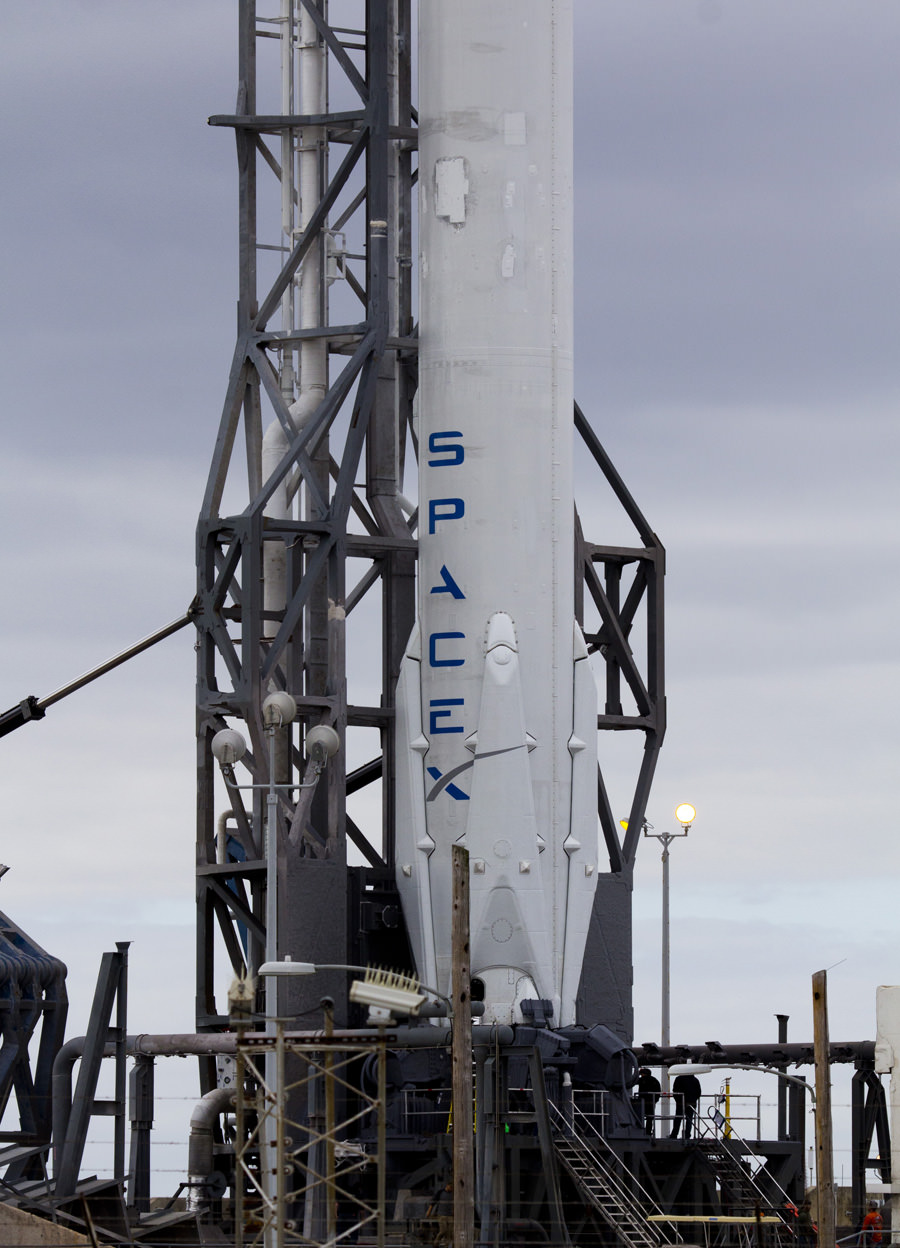
The Falcon 9 is equipped with four landing legs and four grid fins to enable the propulsive landing back on the ground at the Cape, once the first stage separates and relights a Merlin 1D engine.
Two prior attempts to land on a barge came very close with pinpoint approaches to the vessel in the Atlantic Ocean. But the rocket tipped over in the final moments and was destroyed.
The barge was seen in Port Canaveral but apparently not deployed out to sea on Sunday. See photo below.
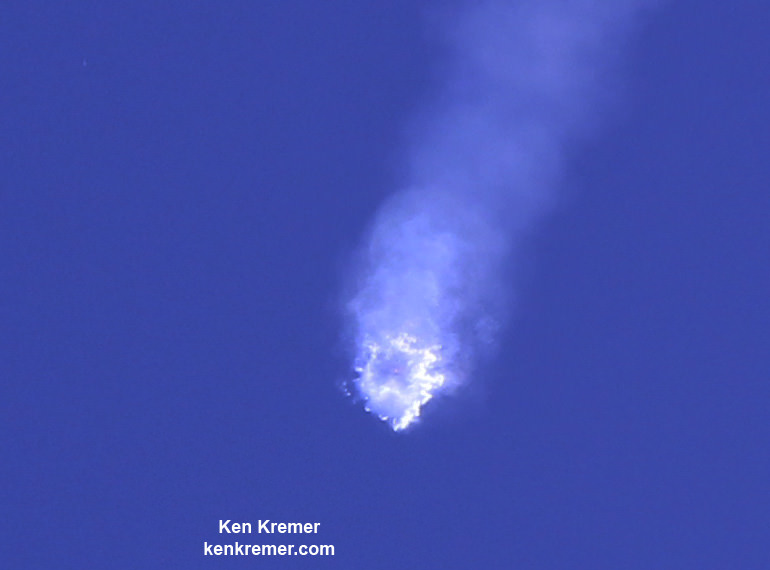
All SpaceX launches ground to an immediate halt this past summer when the commercial two stage Falcon 9 booster carrying a SpaceX cargo Dragon spacecraft heading to the ISS on a critical resupply mission for NASA was unexpectedly destroyed by an overpressure event 139 seconds after a picture perfect blastoff from Space Launch Complex 40 at Cape Canaveral Air Force Station in Florida on June 28 at 10:21 a.m. EDT.
The cause of the in-flight breakup was traced to the failure of a critical support strut inside the second stage liquid oxygen tank holding a high pressure helium tank in the Falcon 9 rocket, as the likely cause, revealed SpaceX CEO and chief designer Elon Musk during a briefing for reporters on July 20.
Musk said the Falcon 9 launch failure was a ‘huge blow’ to SpaceX.
At recent public forums, SpaceX managers have confirmed that a failure of the second stage strut is still the leading candidate for the launch mishap in June.
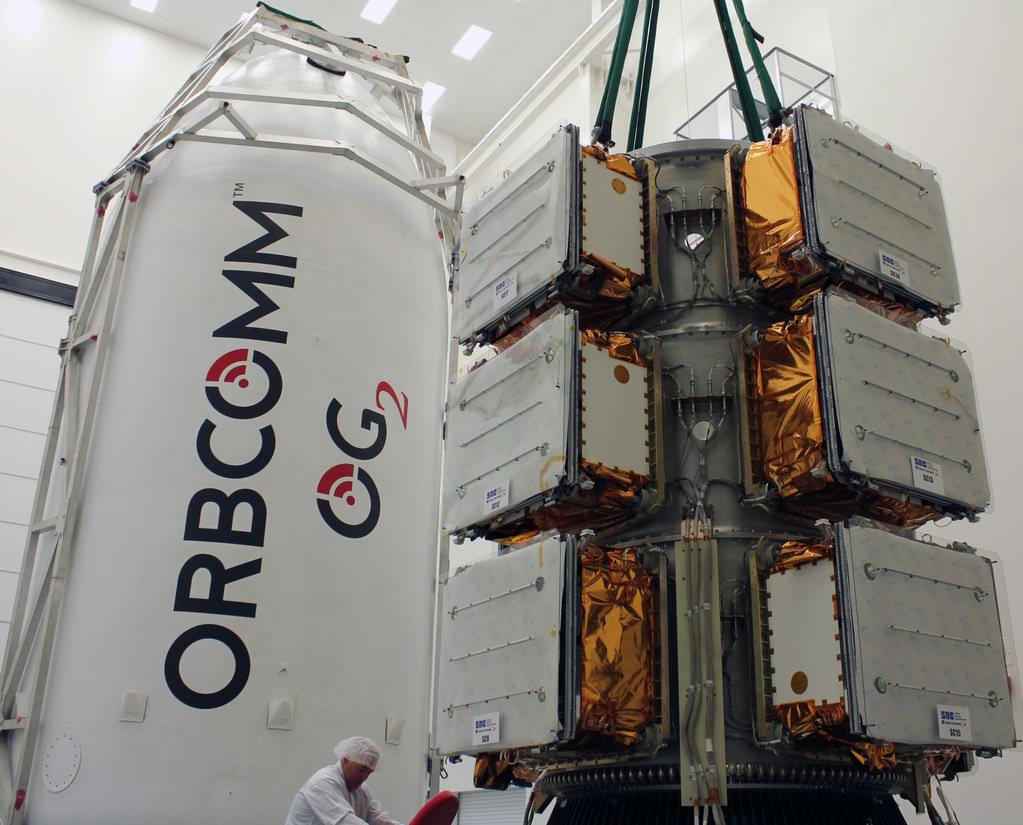
Stay tuned here for Ken’s continuing Earth and planetary science and human spaceflight news.
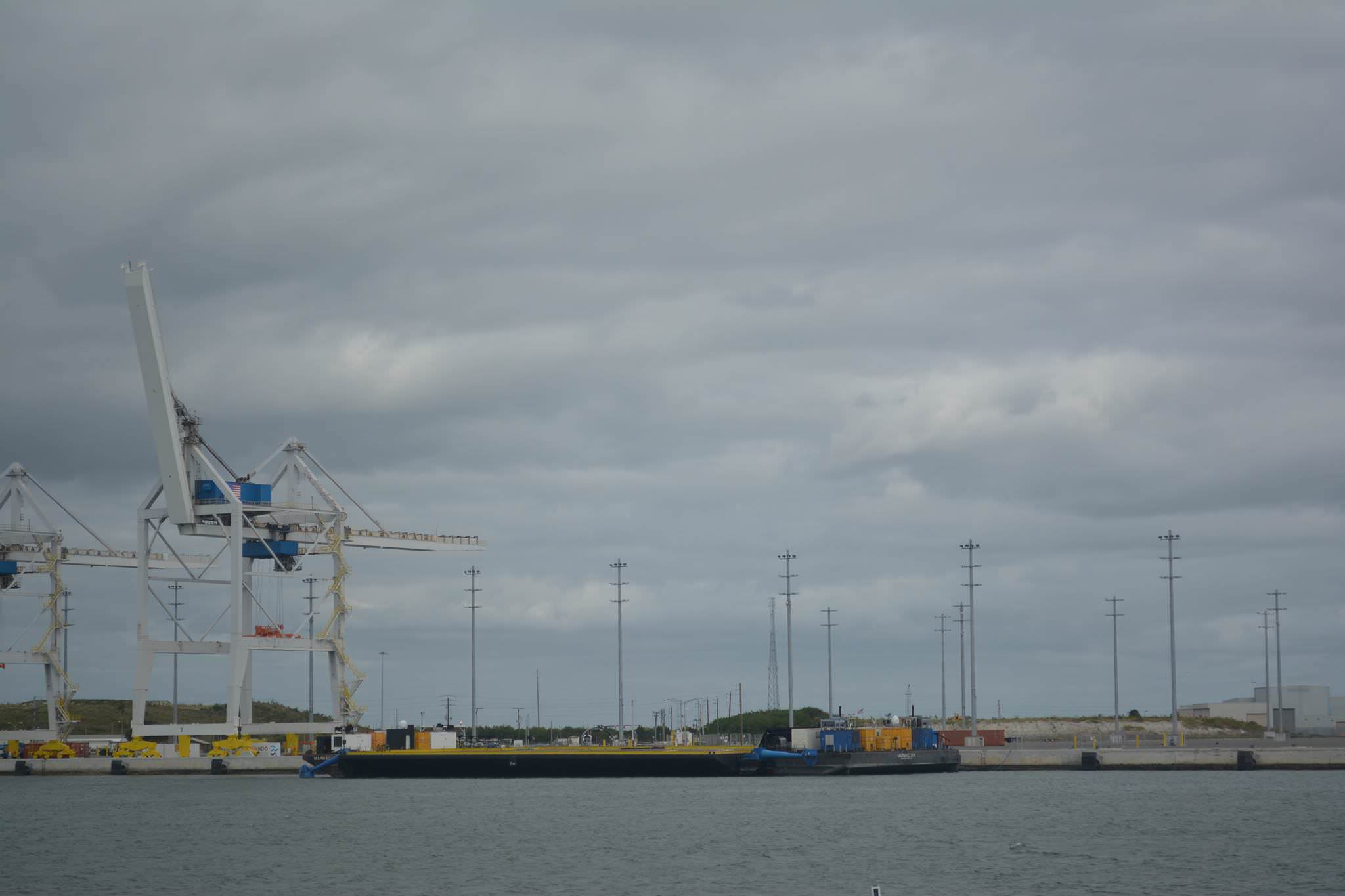
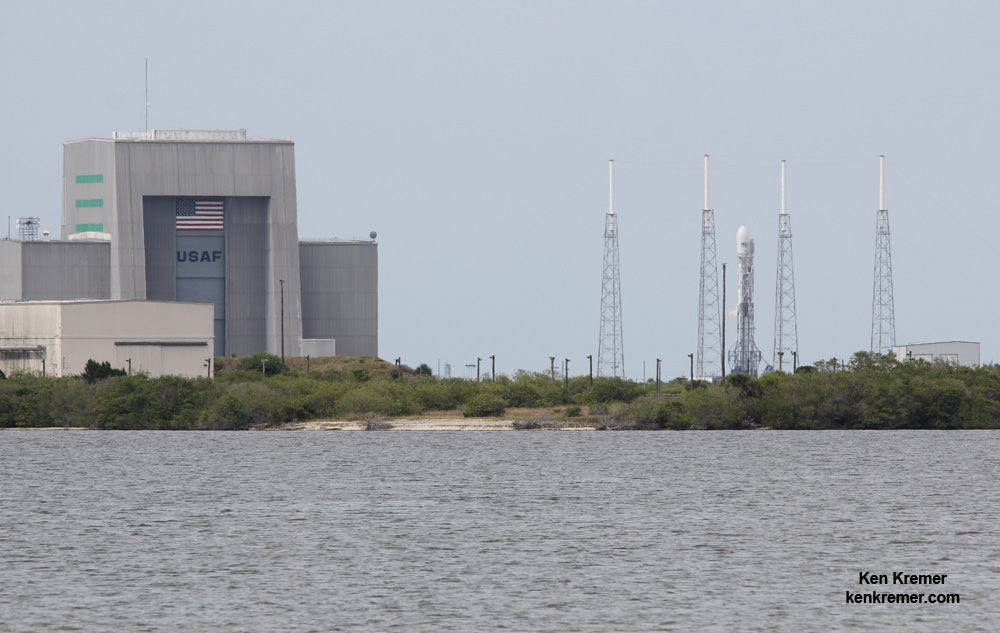


They almost made it landing on a Barge at Sea so this should be a little less difficult…Good Luck SpaceX